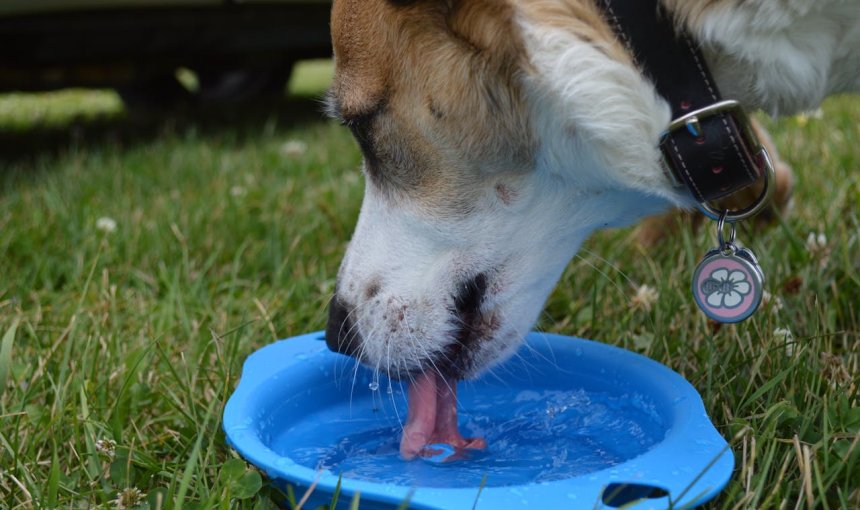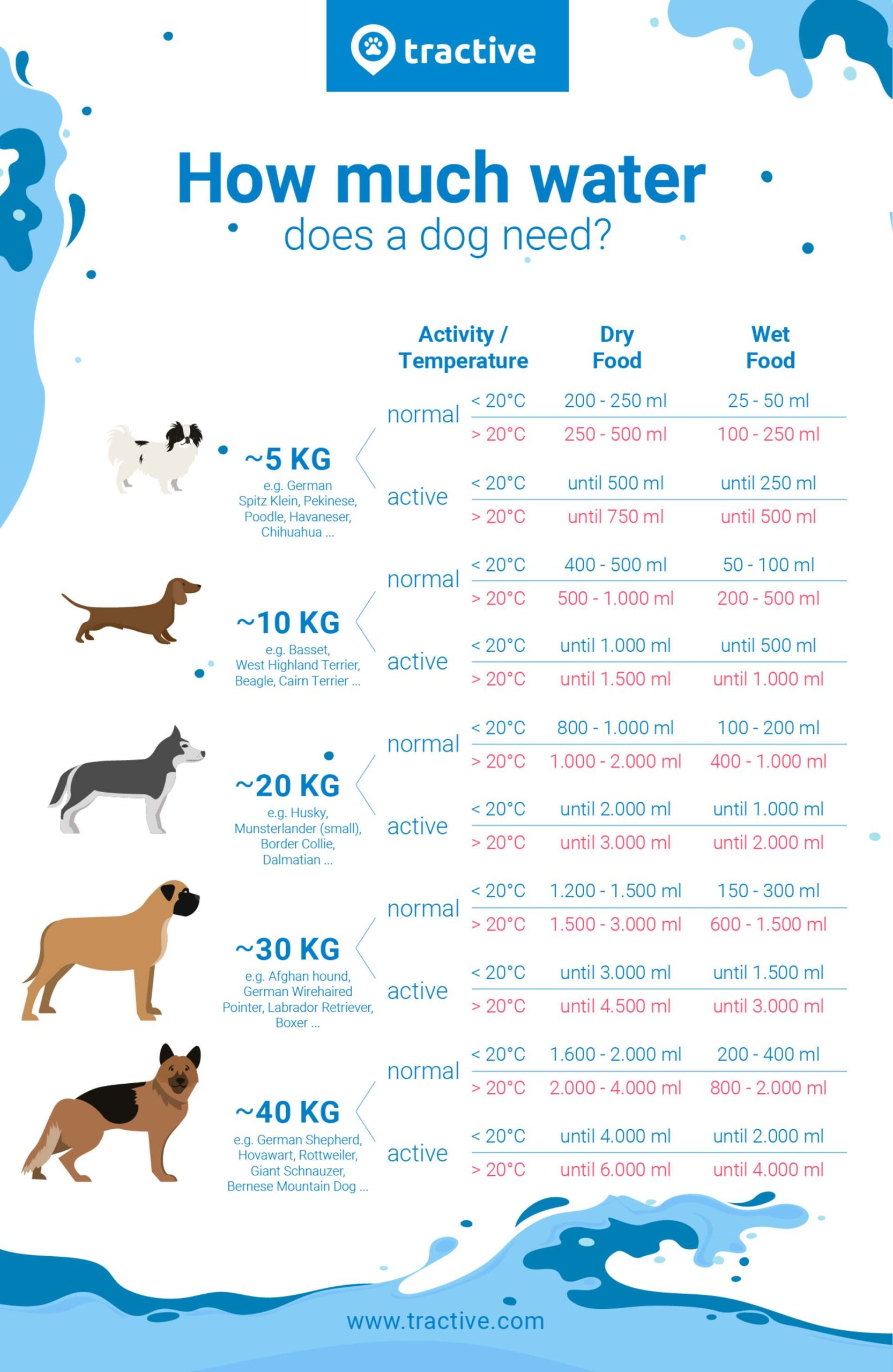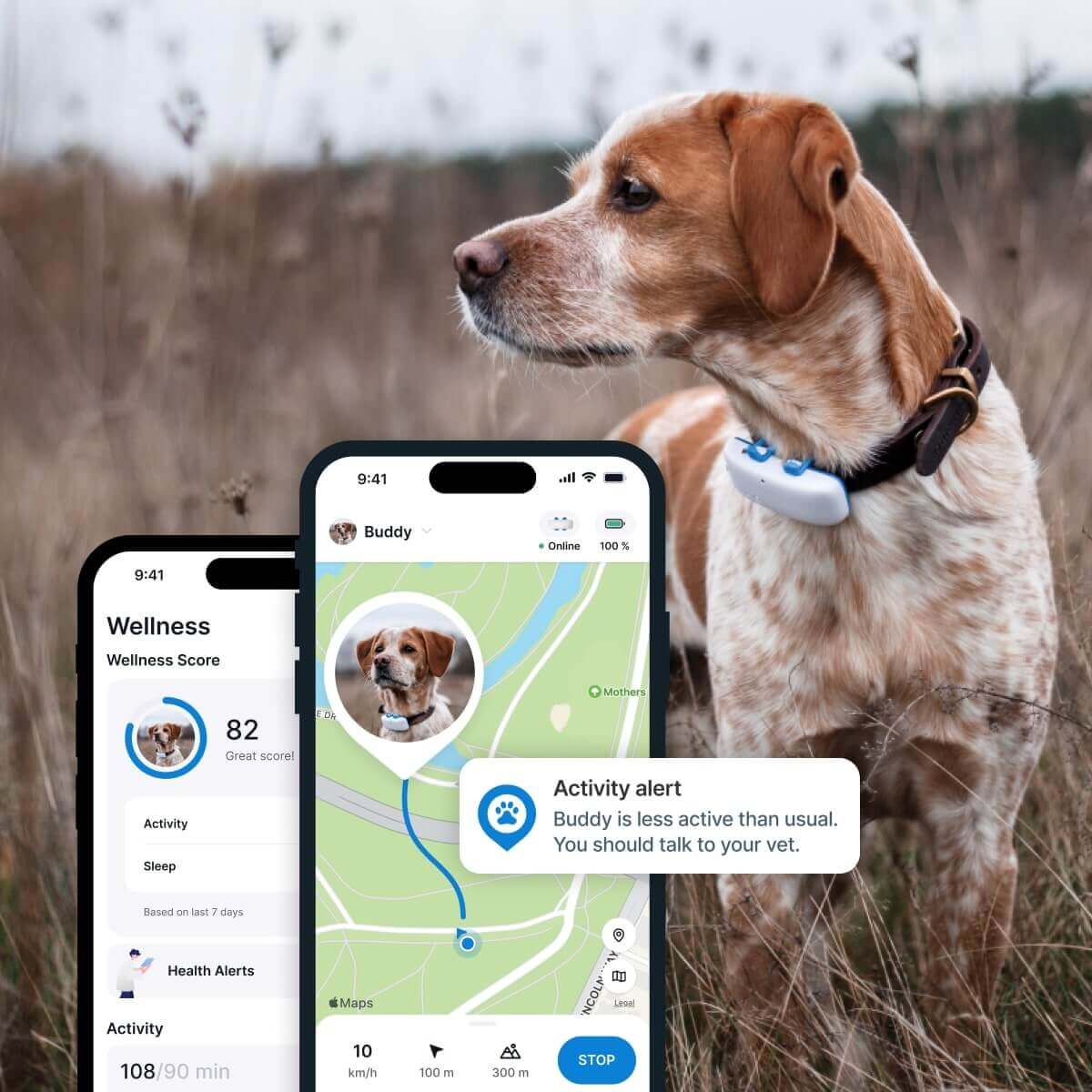 Approved by Dr. Dwight Alleyne, DVM
Approved by Dr. Dwight Alleyne, DVM Dog Drinking A Lot Of Water: Top Causes & What To Do
Is your dog is drinking a bit too much lately, it's good that you've taken notice. Discover the top 5 harmless reasons this could happen - plus possible medical explanations - in this post.

It might be alarming if your dog suddenly stops drinking water, but if you’re dealing with a dog drinking a lot of water (or at least more than usual), that may be a cause for concern too. Because while it may be due to benign reasons like hot weather, excessive thirst in dogs can also be a sign of a more serious health issue. Read on to learn more about the reasons for a dog drinking a lot of water and what you can do about it.

Find out how your dog spends their time.
Read more- How much water should a dog drink a day?
- How much water is too much water for a dog to drink in a day?
- 5 harmless reasons for a dog drinking a lot of water
- 5 medical causes of excessive thirst in dogs
- What to do if your dog drinks a lot of water
- When to head to your vet
- The tech that helps you keep tabs on your dog’s health
- Water intoxication in dogs: What to watch out for
How much water should a dog drink a day?
How much water a dog should drink in a day depends on several factors, like their size, activity level, diet, stage of life and the climate they’re in. Most dogs need about one ounce of clean water for every pound of their body weight per day1. Or in metric terms: 60-80 ml of water per kilogram2.
You can use this guide we created to find out how much water your dog should be drinking based on their size, activity level, the temperature and food type:

When in doubt, consult your vet about how much water your dog should be drinking.
How much water is too much water for a dog to drink in a day?
Excessive thirst (known as polydipsia in the medical world) in dogs is generally considered to be when a dog drinks over 100 ml per kg of body weight per day3. But the exact amount of water in a day that’s considered ‘too much’ varies from dog to dog, based on the factors we mentioned above. Remember, every dog is an individual and needs vary.
5 harmless reasons for a dog drinking a lot of water
In certain situations – when a female dog is nursing a litter of puppies – they’ll drink a bit extra. So before you find yourself worrying, here are some the more harmless reasons why you may have a dog drinking a lot of water:
- Hot weather
Just like us, heat puts a strain on your dog’s body. So they might pant more heavily than usual and lose moisture from their tongues, throats, and upper respiratory tracts. This helps them cool down but also can lead to increased fluid loss, which makes them thirstier. - Increased exercise
Another common reason that might make your dog extra thirsty. Make sure to take plenty of water breaks in the warmer months and warm up thoroughly before any exercise. - Mental workout
Keeping your dog mentally active can also be “tiring” in a different sense. (Like teaching them new tricks, obedience training, interactive toys, or even socializing.) Like us, their brains are made up mostly of water. The more you get your dog to use their brain, the more water it needs to make up for the loss. - Dietary changes
Like if you’ve switched from wet food to dry food or just generally switched up your buddy’s diet. Dry foods tend to be a lot less hydrating than wet foods. - Medications
Some kinds of medication might lead your dog to pee more. So they end up drinking more water to make up for the loss. Including diuretics, glucocorticoids, anti-convulsants, or even psychotropic medication. All of these can affect your dog’s central nervous system or indirectly affect their metabolism or urine excretion.
If your dog is on medication, keep track of any increase in thirst and bring it up with your vet. This will help you figure out whether your dog’s extra water drinking is normal or if there’s cause for concern.
5 medical causes of excessive thirst in dogs
Now once you’ve ruled out the weather, exercise, training, and medication – here are some easy-to-miss health conditions that might cause your dog to drink more water than usual.
- Diabetes mellitus
Where your dog’s body doesn’t properly transport any sugar from their blood into their cells (for energy.) This can lead to increased blood sugar – as well as increased thirst. You might also find your dog losing weight without a change in diet. - Gastrointestinal problems
Drinking a lot of water could be a sign your dog might’ve eaten something they shouldn’t have. (Which could be fatally toxic to them as well.) - Liver & urinary diseases
Your dog’s liver, bladder, and kidneys all play important roles in their body’s water balance. So if they’re infected, you might find your buddy peeing more than usual, showing blood in their urine, or even peeing around the house to get rid of the toxins. - Infections
Different types of infection – including viral and bacterial infections that cause fever – can cause your dog to grow thirstier. - Cushing’s Syndrome
This condition leads to an overproduction of cortisol (the stress hormone.) Which can affect your dog’s metabolism and cause them to drink more.
If left untreated, many of these diseases can be fatal. So make an appointment with your vet asap if you notice your senior dog drinking more.
What to do if your dog drinks a lot of water
If you find your dog drinking a lot more than usual, here are some steps you can take:
- Never restrict water
Cutting off your dog’s water access can worsen dehydration and underlying issues. - Monitor diet
Opt for low-sodium treats and consider switching to a moisture-rich diet (like wet food) after consulting your vet. - Keep them cool
In hot weather, provide shade, fresh water, and rest breaks to prevent overheating. - Regular vet check-ups
Routine exams can catch potential problems early and keep your pet healthy.
When to head to your vet
While a little extra water on a hot day is normal, you should seek veterinary care if:
- Your dog drinks excessively for more than 24-48 hours.
- They are urinating more frequently or having accidents in the house.
- They show signs of weight loss, vomiting, or lethargy.
Catching these symptoms early can make a big difference in your dog’s health outcomes.
The tech that helps you keep tabs on your dog’s health
Did you know? Vets recommend tracking your dog’s everyday activity4. That’s because a sudden change in dog’s normal activity level or sleep disturbances can be signs that something’s wrong.
With Tractive’s Health Alerts, you can detect unusual changes in your dog’s behavior – like increased restlessness or sudden inactivity. The simple dog tracking device alerts you the moment that there is a noticeable drop in your dog’s activity, so you can take action and get them to a vet for a checkup.
Combined with GPS tracking, you’ll have peace of mind knowing you can monitor your furry friend’s health and safety around the clock.

Water intoxication in dogs: What to watch out for
What many dog parents also need to watch out for is water poisoning – or when your dog ingests too much (or contaminated) water. If your dog ingests at least a third of their body weight in water – they might be at risk for water intoxication.5 When this much water enters their bloodstream, it can disturb their body’s electrolyte balance – especially their levels of sodium. Left untreated, this can even lead to death.
Signs of water poisoning in dogs
If you think your dog’s ingested more water than they can handle, it can be deadly if you miss out on it. So make sure to watch out for these signs:
- Distended abdomen
- Pale mucous membranes
- Heavy salivation
- Dilated pupils
- Drowsiness
- Vomiting
- Uncontrolled peeing
- Muscle twitching
- Seeming dazed or uncoordinated
What should I do if my dog drinks too much water?
Water intoxication is an emergency. If you notice these symptoms, get your dog to a vet as soon as possible. If you can, call them in advance so that they’re prepared for your arrival. On your way to the vet, give your dog something salty to eat – like salt sticks or salty cookies, if you have some available.
Preventing water intoxication in dogs
Now if you’ve got a dog that loves being in water, it’s a good idea to:
- Keep an eye on how long they’ve been swimming or just being in water in general
- Ensure they take enough breaks
- Watch out for the signs of water intoxication or overexertion
- Use a frisbee or a safe stick substitute for fetch rather than a ball (so your dog won’t have to keep their mouth so wide open when jumping in)
- Keep track of your dog’s activity, so you can catch on to a weird drop in time. This could signal lethargy, weakness, or the beginnings of an illness.

Get health alerts for your dog
Our pups can’t always tell us if something’s wrong. But if their tracker detects unusual changes in their routine, you’ll get an alert, helping you catch potential issues early.
And if you’ve liked this post, share it with a friend or a loved one – and let’s help build a safer, kinder world for our furry friends together.
Your furry friend’s health and wellbeing means as much as to us as it does to you. So we’ve made it a priority to only share medically-relevant content on our blog.
This post was checked, double-checked, and medically verified by Georgia-based vet, Dr. Dwight Alleyne.

Originally from Long Island, New York, Dr. Alleyne began his career at a no-kill animal shelter before becoming a licensed veterinary technician. He graduated from Cornell University Veterinary College in 2006 and completed an internship at Purdue University.
Now practicing in Georgia, Dr. Alleyne specializes in soft tissue surgery and ultrasounds. He also writes pet health articles on his website, “The Animal Doctor Blog” (www.anmldrblog.com).



